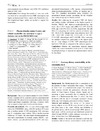Identificador persistente para citar o vincular este elemento:
https://accedacris.ulpgc.es/jspui/handle/10553/41929
| Título: | Plasma trimethylamine-N-oxide and related metabolites are associated to type 2 diabetes risk in the PREDIMED trial (P 146-T) | Autores/as: | Papandreou, C. Bullo, M. Zheng, Y. Ruíz-Canela, M. Yu, E. Guasch-Ferre, M. Toledo, E. Clish, C. Corella, D. Estruch, R. Ros, E. Fito, M. Aros, F. Fiol, M. Lapetra, J. Serra-Majem, Ll Gómez-Gracía, E. Liang, L. Fragkiadakis, G. Razquin, C. Hu, F. Salas-Salvado, J. |
Clasificación UNESCO: | 3206 Ciencias de la nutrición | Fecha de publicación: | 2018 | Publicación seriada: | European journal of clinical investigation (Print) | Conferencia: | 52nd Annual Scientific Meeting of the European Society for Clinical Investigation “Precision medicine for healthy ageing”, Barcelona, Spain, 30th May – 1st June 2018 | Resumen: | Background: The role of trimethylamine-N-oxide (TMAO) in type 2 diabetes (T2D) is currently partially understood and controversial. We aimed to investigate associations between TMAO and related metabolites with type 2 diabetes (T2D) risk in subjects at high risk of cardiovascular disease. Material and methods: This is a case-cohort design study within the PREDIMED study, with 251 incident T2D cases and a random sample of 694 participants (641 non-cases and 53 overlapping cases) without T2D at baseline (median follow-up: 3·8 years). We used liquid chromatography-tandem mass spectrometry to measure plasma TMAO, L-carnitine, betaine, lyso-phosphatidylcholine (LPC) and lyso-phosphatidylethanolamine (LPE) species, phosphocholine, alpha-glycerophosphocholine, choline, at baseline and 1-year. We examined associations using weighted Cox proportional hazard models; accounting for the weighted case-cohort design by the Barlow method. Results: After adjusting for recognized T2D risk factors and multiple testing, individuals in the highest quartile of baseline TMAO and alpha-glycerophosphocholine had lower risk of T2D; hazard ratio (HR) 0·52 (95% CI 0·29, 0·89), and 0·46 (95% CI 0·24, 0·89), respectively. The HR (95% CI) comparing the extreme quartiles of betaine was 0·41 (0·23, 0·74). Similar trends were observed for C16:0 LPC, C18:1 LPC, C18:0 LPC, C20:4 LPC, C22:6 LPC, C18:1 LPC plasmalogen and C16:0 LPE. After correcting for multiple comparisons, participants in the highest quartile of 1-year changes in C18:1 LPC plasmalogen levels had lower T2D risk as compared to the reference quartile. Conclusions: Whether the associations between plasma TMAO and certain metabolites levels with T2D risk reflect its pathophysiology or represent an epiphenomenon need to be elucidated. | URI: | https://accedacris.ulpgc.es/handle/10553/41929 | ISSN: | 0014-2972 | DOI: | 10.1111/eci.12926 | Fuente: | European Journal of Clinical Investigation [ISSN 0014-2972], v. 48 (S1), p. 176-176 |
| Colección: | Póster de congreso |
Visitas
99
actualizado el 18-may-2024
Descargas
93
actualizado el 18-may-2024
Google ScholarTM
Verifica
Altmetric
Comparte
Exporta metadatos
Los elementos en ULPGC accedaCRIS están protegidos por derechos de autor con todos los derechos reservados, a menos que se indique lo contrario.
